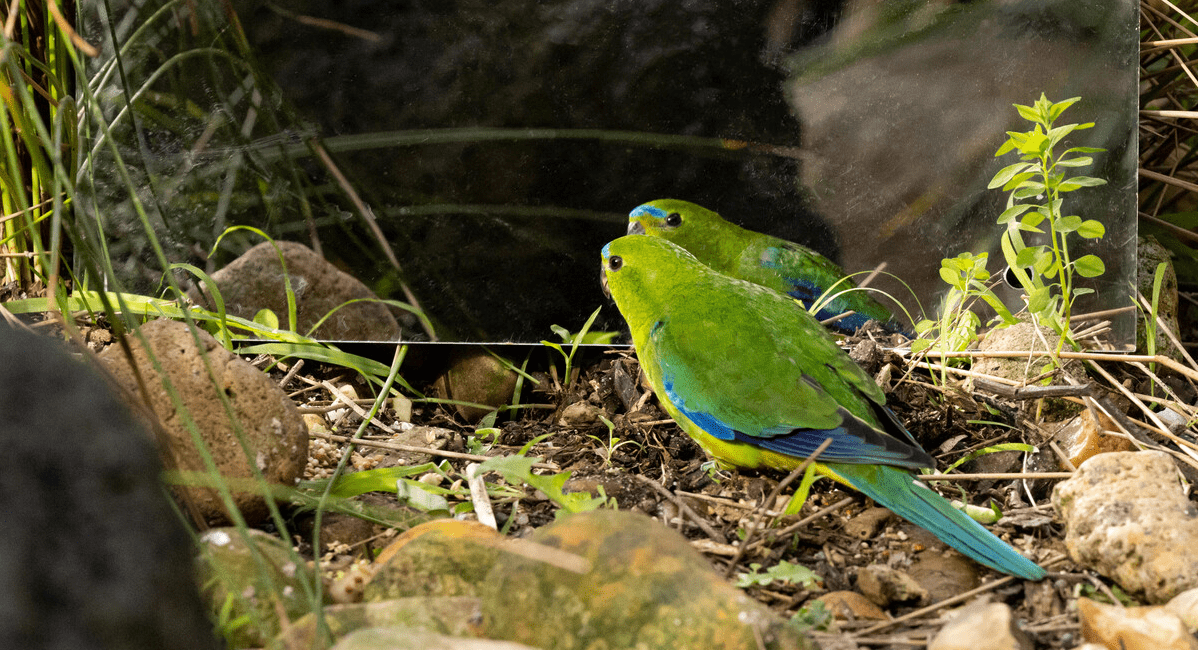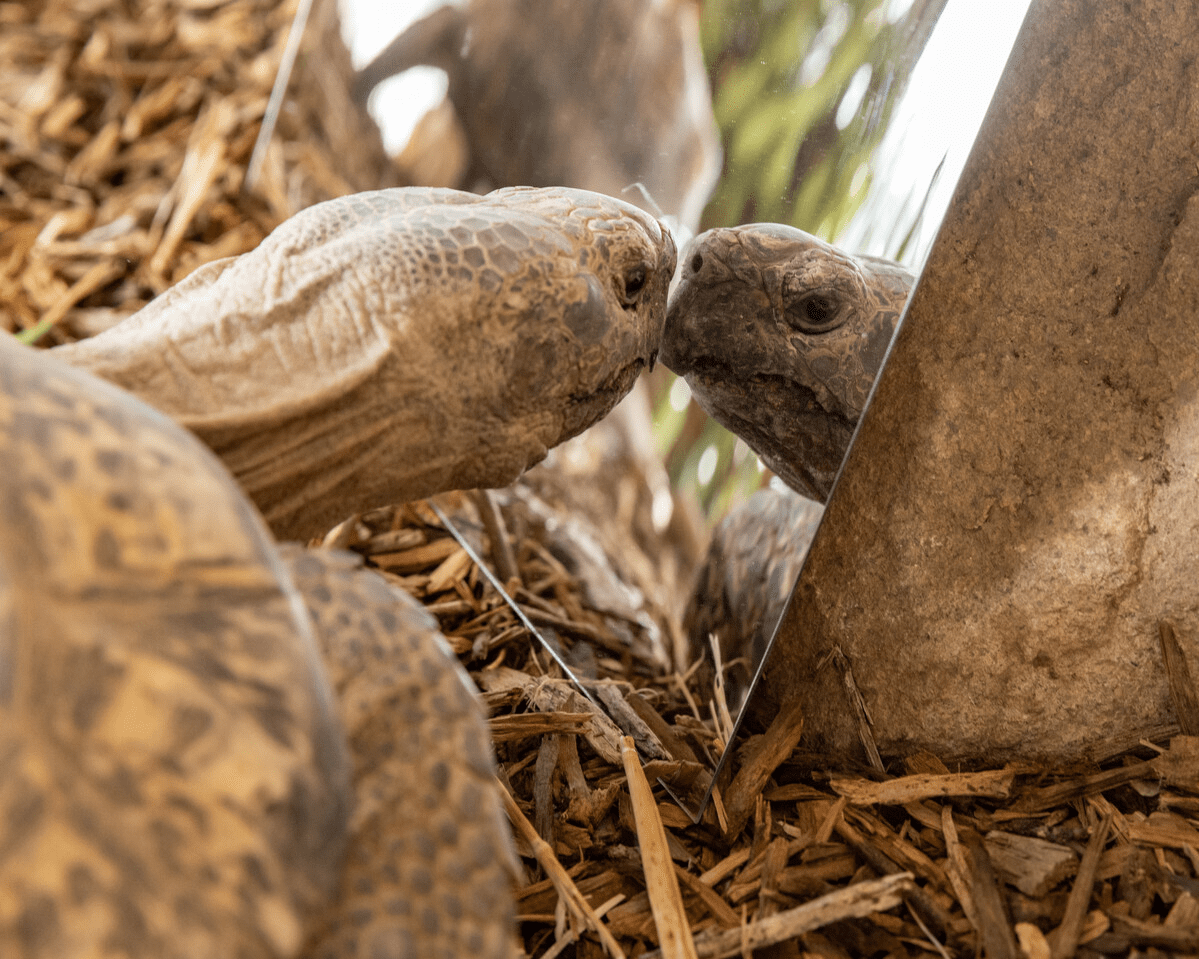Werribee Open Range Zoo, Australia, is putting on mirror week for some of its animals, exposing them to their own reflections. The experience will stimulate the creatures, and also provide insight for the keepers, who are closely monitoring how each animal responds to learn about differences within and between species.
Zoos (at least the good ones) long moved on from the perspective that all they needed to do was keep their animals alive and physically healthy enough that people would come to see them. Today, zoos are concerned, perhaps even obsessed, with providing enrichment – intellectual stimulation to prevent animals from getting bored. In the process, they provide some wonderful images for the rest of us.
Avoiding animal boredom is easier at Werribee, west of Melbourne, than in an inner city zoo where space is highly constrained. Nevertheless, the zoo still believes its animals need some extra enrichment and has decided using the same instrument across five species will allow them to explore the effectiveness of the approach.
“In the wild, animals would come across their own reflections when looking into a large body of water, so the mirrors are one of the methods we can use to replicate that experience at the Zoo,” the Zoo’s Jacinda Goodwin said in a statement. “There are some species, such as the Vervet monkeys, that have the cognitive ability to look in the mirror and recognise their own reflection.”
Better still, the monkeys take a while to realize they are looking at themselves. “Like a good brain teaser, we observe them investing considerable time into trying to work out who the other monkey is,” Goodwin added. In the process, their brains get exercised, and boredom is kept well at bay for a while.
Not all the monkeys seemed able to make the connection, Goodwin observed, but still playfully modified their facial expressions indicating they were having fun.
“Other animals, like koalas and orange-bellied parrots, may perceive their reflection as another member of their species, so the reflections can stimulate social behaviours, such as investigation, vocalising or flocking,” Goodwin added.

When there are only a few hundred of your species left alive, the arrival of an apparent new member of the flock is exciting, even if it is actually just your own reflection. Image Credit: Zoos Victoria
Orange-bellied parrots are among the world’s most endangered birds, so the Zoo is particularly keen to keep its resident population happy. “We noticed members of the flock, vocalising towards and running up to their reflection. We assume they are interpreting their reflection as another member of their species as these behaviours are in keeping with how they interact with their flock-mates,” Goodwin told IFLScience.
Koalas, meanwhile, rely as much on smell as sight, so while the mirror prompts them to investigate, they don’t seem too alarmed about the possibility of an intruder if there is no accompanying novel scent.
Zoo’s Victoria Animal Behavior Specialist Sue Jaensch told IFLScience; “We don’t leave mirrors in their enclosures for a long time; we want to be a novel experience, a problem for [the animals] to solve.” For each animal, Jaensch added, the keepers are seeking to evoke a particular behavioral response. If that is not what they get, they modify future enrichment programs accordingly.

The arrival of a mirror in the leopard tortoise enclosure is such a significant event the inhabitants walk all the way over to investigate, which takes real commitment. Image Credit: Zoos Victoria
People worried about leaving their pets home alone could use mirrors as well, Jaensch suggests, but they should observe the animals’ initial response to a mirror to make sure they’re not distressed.
The program’s other participants are meerkats and leopard tortoises. The zoo is better known, however, for its large animals such as giraffes with unusual tastes, rhinoceroses, and American bison. Jaensch told IFLScience the zoo has no current plans to try to engage these inhabitants this way, but if they did, making mirrors unbreakable to a charging rhino might be more of a challenge than making them large enough. “We always make thorough safety evaluations,” she said. “We never put in breakable mirrors and always need to be able to remove them safely.”
Source Link: Zoo Gives Animals Mirrors To Reflect Their Individual Personalities